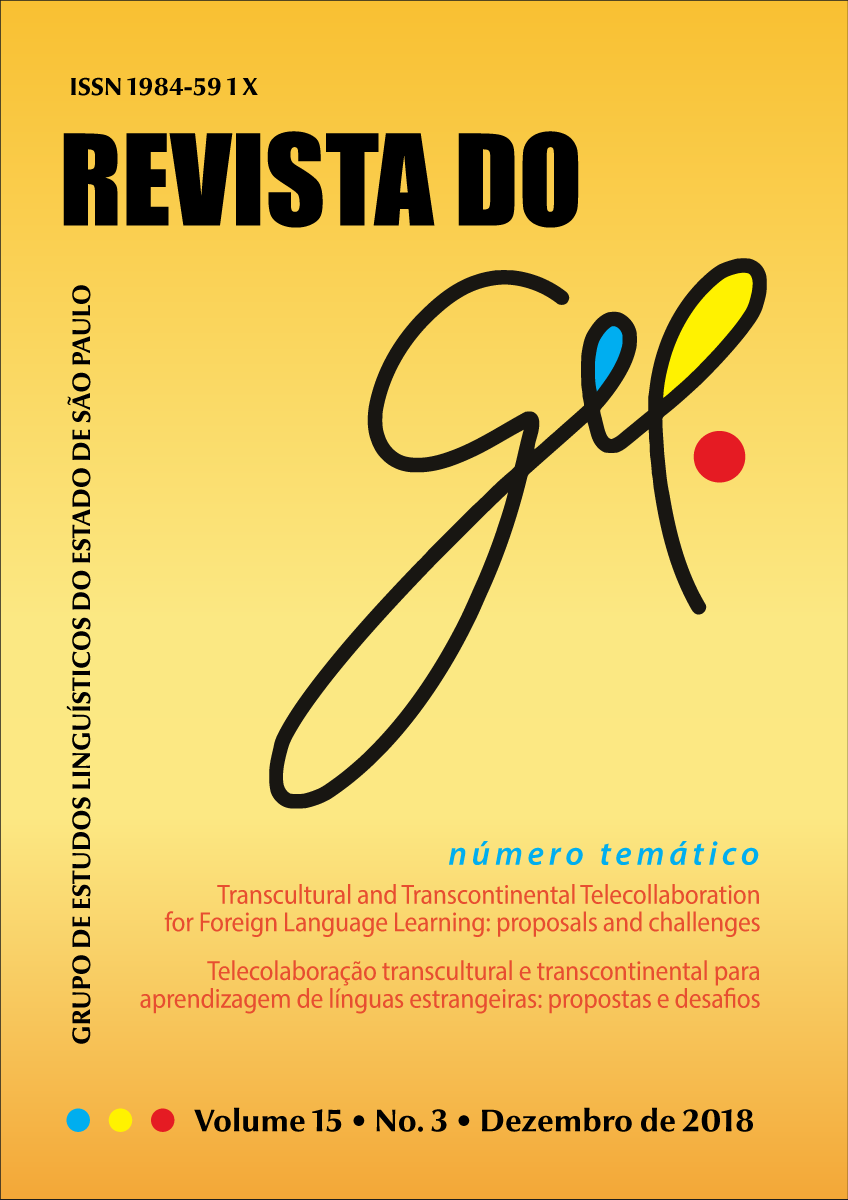Face-to-face tandem and etandem: differences that influence the maintenance of tandem learning activities.
DOI :
https://doi.org/10.21165/gel.v15i3.2408Mots-clés :
Aprendizagem em tandem face-aface. eTandem. Motivação. Autonomia do aprendiz. Aprendizagem de línguas mediada por computador.Face-to-face tandem learning. eTandem. Motivation. Learner autonomy. CALL.Résumé
This paper compared two qualitative multiple case studies and discussed the influence that face-toface tandem and eTandem methods had on maintaining learning activities in tandem. One study focused on faceto-face tandem learning and the other focused on eTandem via e-mail and Skype. The participants of the former were three Japanese-English tandem pairs who participated in a face-to-face tandem project on the campus of a Japanese University. The participants of the latter were three Japanese-German tandem pairs who participated in an eTandem project as part of a collaboration between a Japanese and a German university. These multiple qualitative case studies employed multiple data, including recordings of tandem sessions, learning diaries, resources used in tandem sessions, e-mail/chat logs, field notes, and post-research interviews. The result of the comparison between the two case studies revealed the following three differences affecting the maintenance of learning activities in tandem: 1) distance and physical restriction caused differences in accessibility to sessions, 2) when encountering communication breakdowns, partners in face-to-face tandem learning drew pictures and used nonverbal communication, whereas learners in eTandem tended to rely on online or electronic dictionaries, and 3) learners supported each other more actively in face-to-face tandem learning.
Téléchargements
Téléchargements
Publié-e
Comment citer
Numéro
Rubrique
Licence
Esta revista oferece acesso livre imediato ao seu conteúdo, seguindo o princípio de que disponibilizar gratuitamente o conhecimento científico ao público proporciona maior democratização mundial do conhecimento.
A REVISTA DO GEL não cobra taxa de submissão ou de editoração de artigos (articles processing charges – APC).
Os critérios gerais de direitos autorais da REVISTA DO GEL estão dispostos no termo de direitos autorais que cada autor aceita ao submeter seu trabalho no periódico. Como regra geral o periódico utiliza as regras CC BY-NC da Creative Commons (regra disponível em: https://creativecommons.org/licenses/by-nc/4.0/legalcode)



